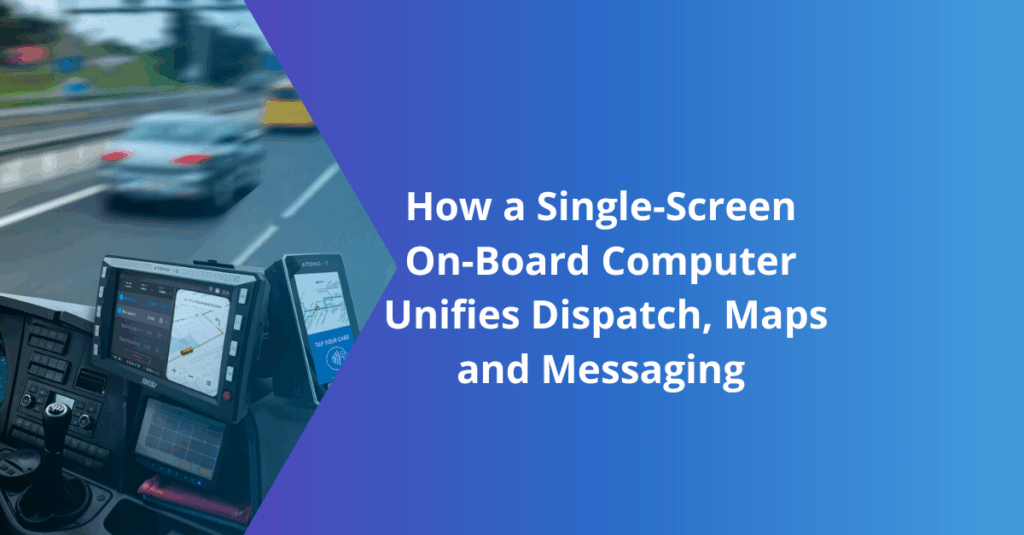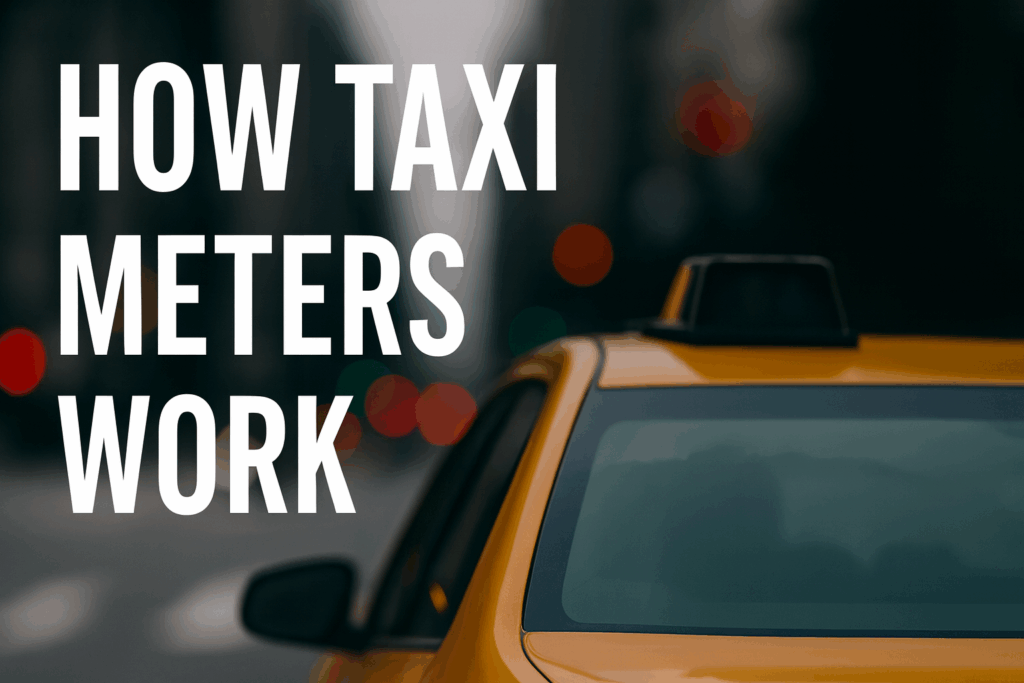Industrial-Grade vs Consumer Devices: Why Professional Hardware Always Wins
INDUSTRIAL-GRADE VS CONSUMER DEVICES Why Professional Hardware Always Wins November 12, 2025 09:30 am In the world of connected mobility, public transport and fleet management, the difference between industrial-grade vs consumer devices determines much more than performance – it impacts safety, uptime, and the long-term sustainability of every operation. At first glance, tablets and smartphones designed for everyday use may seem attractive from a budget perspective. However, only true industrial-grade, automotive-compliant hardware can deliver the 24/7 reliability that modern fleets, transport authorities and operators actually require. Digitax devices – such as the ATOMO 10 MDT, ATOMO 10 ETS, ATOMO 7 Smart Ticket Validator and X-One Android family – are purpose-built for professional mobility ecosystems, not adapted consumer electronics. They are designed to integrate deeply with on-board systems, withstand harsh environments and evolve over time thanks to modular, future-proof architectures. 1. DESIGNED FOR AUTOMOTIVE RELIABILITY Industrial-grade devices for mobility must survive far more than office use. They are installed in buses, taxis, emergency vehicles, logistics and special vehicles fleets that operate all day, every day. Therefore, Digitax on-board systems are: industrial grade and automotive compliant, designed specifically for fleet management, public transport and special vehicles. engineered for harsh environments – with high protection levels, extended temperature ranges and resistance to vibration, dust and humidity, as specified in product datasheets. certified for electromagnetic compatibility and safety, ensuring stable behaviour even in noisy electrical environments typical of vehicles. By contrast, consumer devices are simply not designed for this context. Their housings, connectors and components are optimised for indoor, personal use – not for continuous exposure to temperature fluctuations, vibrations, power spikes and constant connectivity. When mission-critical data, ticketing and fleet supervision depend on the hardware, the difference is clear: industrial-grade technology means fewer failures, predictable maintenance and maximum service continuity. TABLE of CONTENTS Designed for Automotive Reliability Designed for Automotive Reliability Future-Proof Performance for professional fleets Future-Proof Performance for professional fleets Total Cost of Ownership and Lifecycle Value Total Cost of Ownership and Lifecycle Value Safety, Compliance and Mission Continuity Safety, Compliance and Mission Continuity Full Connectivity for Professional Integration Full Connectivity for Professional Integration Advanced Software Ecosystem: Digitax SDK Advanced Software Ecosystem: Digitax SDK Certified for Smart Mobility and Contactless Payments Certified for Smart Mobility and Contactless Payments Real-World Applications and Ecosystem Integration Real-World Applications and Ecosystem Integration Made in Italy, Trusted Worldwide Made in Italy, Trusted Worldwide Conclusion: When Reliability Matters, Industrial Wins Conclusion: When Reliability Matters, Industrial Wins FAQ FAQ 2. FUTURE-PROOF PERFORMANCE FOR PROFESSIONAL FLEETS Across the Digitax range – from ATOMO 7 and ATOMO 10 MDT / ATOMO 10 ETS to X-One Android MDT, FORCE ONE Navigator and M1 MDT – each platform is engineered as professional, automotive-grade hardware with clear product roadmaps, extended component availability and dedicated firmware support. This long-term vision allows operators to deploy systems that remain reliable and aligned with future requirements. In practice, this long-term approach means fleets can adapt to new standards, services and applications while preserving their hardware investment. Instead of replacing consumer tablets every two or three years, operators can keep their professional in-vehicle systems in service for many more years, upgrading only what is truly necessary. Discover Digitax Mobile Data Terminals full range 3. TOTAL COST OF OWNERSHIP AND LIFECYCLE VALUE The initial purchase price is only one part of the real cost of a device. For professional fleets, what really counts is Total Cost of Ownership (TCO) over the full lifecycle. Consumer devices often entail hidden costs, such as: Shorter lifecycle and frequent replacements; Limited availability of spare parts; No guaranteed long-term software support; Higher risk of failures and downtime. On the other hand, industrial-grade Digitax devices are designed with the opposite philosophy. They are built for long-term operation, supported by component availability and product roadmaps. Firmware and software updates are aligned with professional needs, including security patches and compatibility with new back-office systems. Moreover, modular upgrades – like the Android Platform On Module on ATOMO 10 MDT – delay hardware obsolescence and avoid disruptive “rip & replace” projects. As a result, fleet operators benefit from a lower cost per year of operation, reduced downtime and more predictable budgeting. For public transport agencies and system integrators, this translates directly into a higher return on investment. 3D design of Digitax ATOMO 7 onboard devices for smart mobility A Digitax engineer works on dual monitors on the exploded 3D model of ATOMO 7 smart Validator onboard device, reviewing electronic and mechanical components for advanced smart mobility solutions. 4. SAFETY, COMPLIANCE AND MISSION CONTINUITY In mobility and public transport, safety is non-negotiable. Devices must be stable not only under normal conditions, but also during power fluctuations, vehicle restarts or unexpected events. For this reason, Digitax hardware is designed for: automotive-grade power management, with advanced functions for safe shutdown, controlled restart and wake-up, reducing the risk of data loss or system corruption during voltage drops or engine cranking. EMC and E-Mark compliance, essential for use on certified vehicles and for integration into larger on-board systems. secure architectures with embedded taximeter CPUs and protected Android environments, so that certified metrological functions remain operational even if the main application layer restarts. These features are critical for taxi fleets, emergency services, public transport operators and all applications where continuity of service and integrity of certified functions are mandatory. PCB layout design for advanced onboard electronics Close-up of a Digitax engineer reviewing a detailed PCB layout on a computer screen, showing complex circuit traces and components for advanced onboard electronic systems. 5. FULL CONNECTIVITY FOR PROFESSIONAL INTEGRATION Consumer tablets are typically limited to Wi-Fi, Bluetooth and a few USB ports. In complex vehicle systems, however, this is not enough. Modern mobility solutions must connect to: on-board diagnostics ticketing equipment passenger counting systems printers, displays and sensors central fleet management and AVM platforms Digitax on-board systems are designed specifically for this scenario. Depending on the model, they can offer multiple serial and field interfaces (such as RS232, RS485, CAN Bus, digital and analog I/O and






